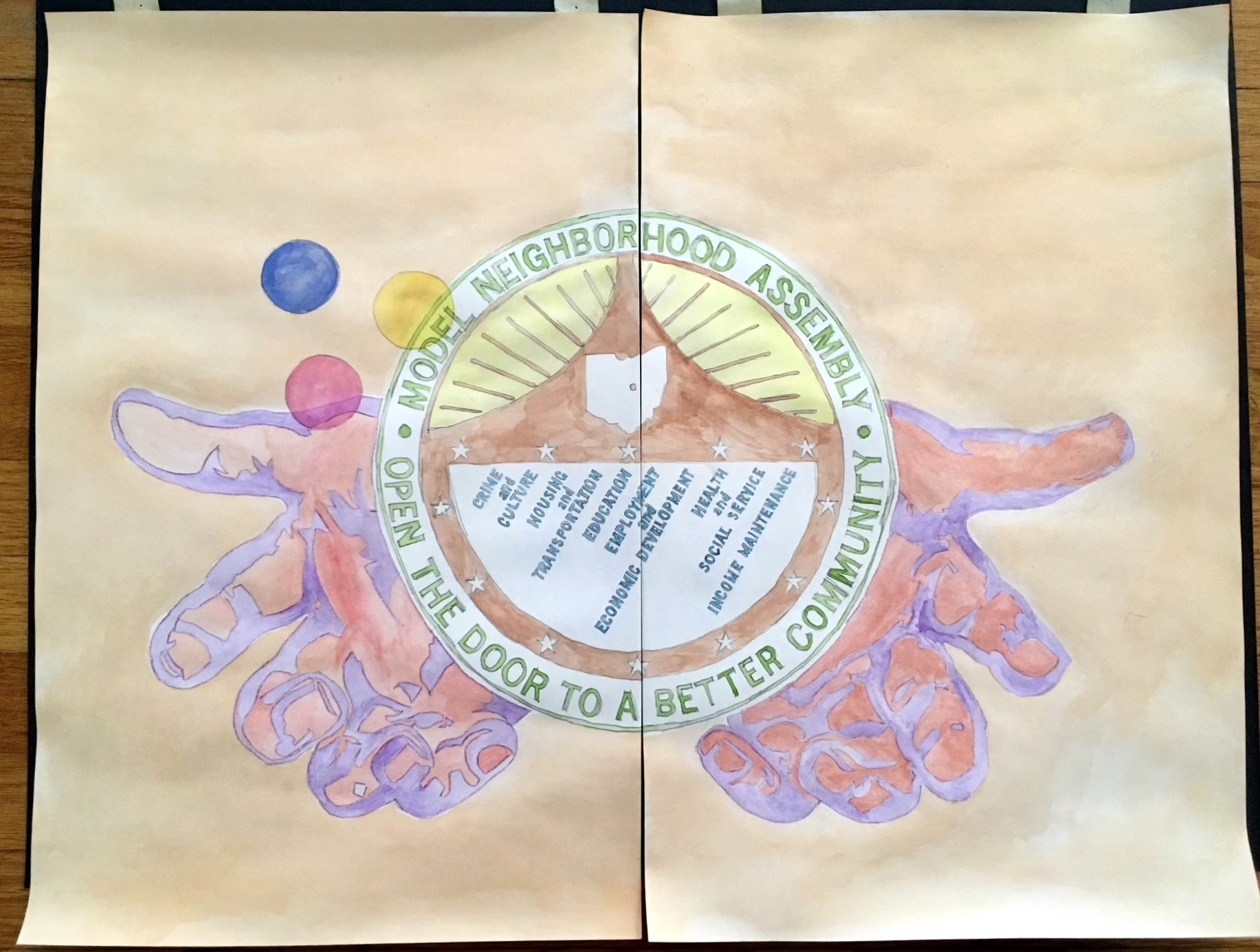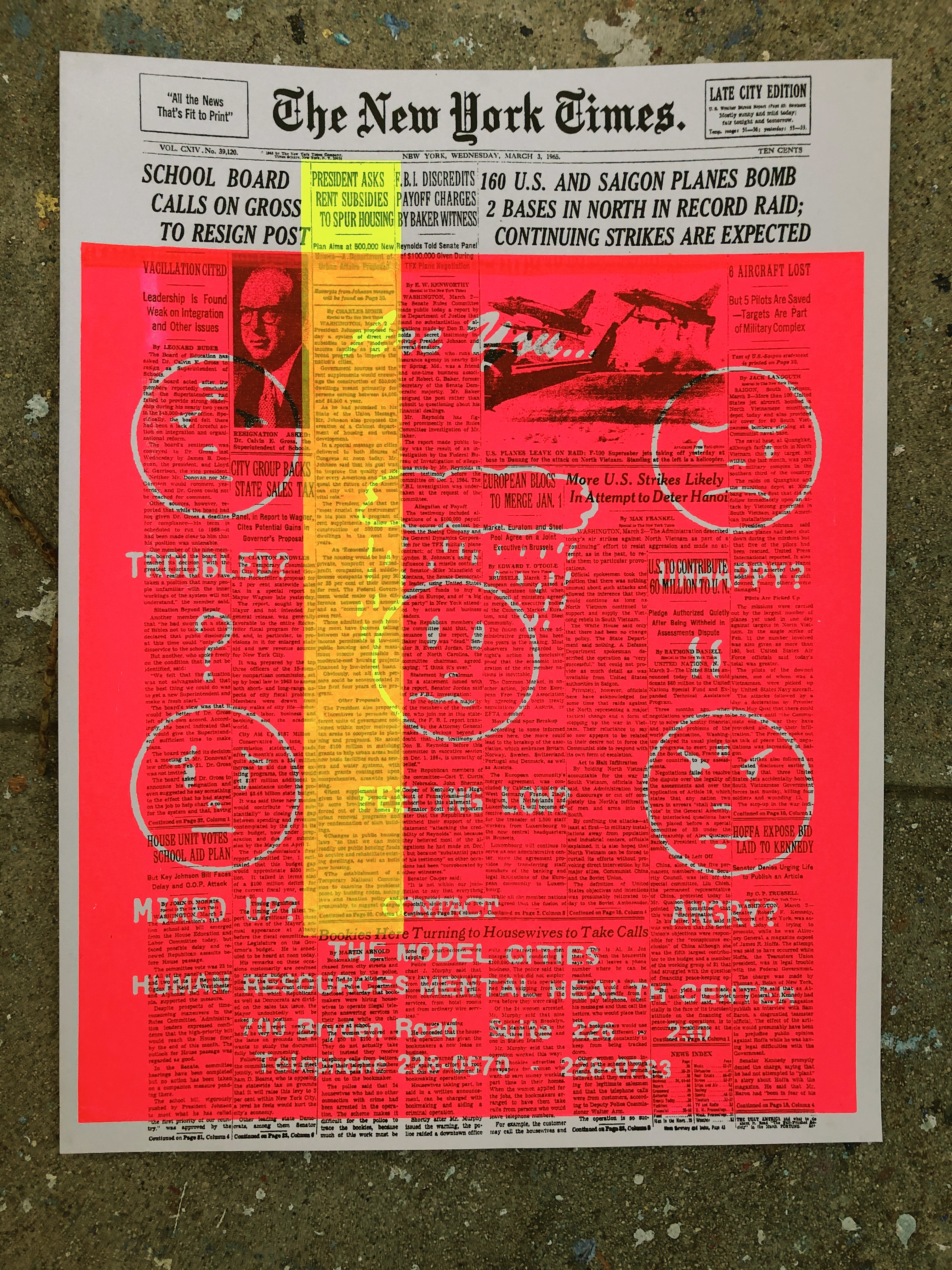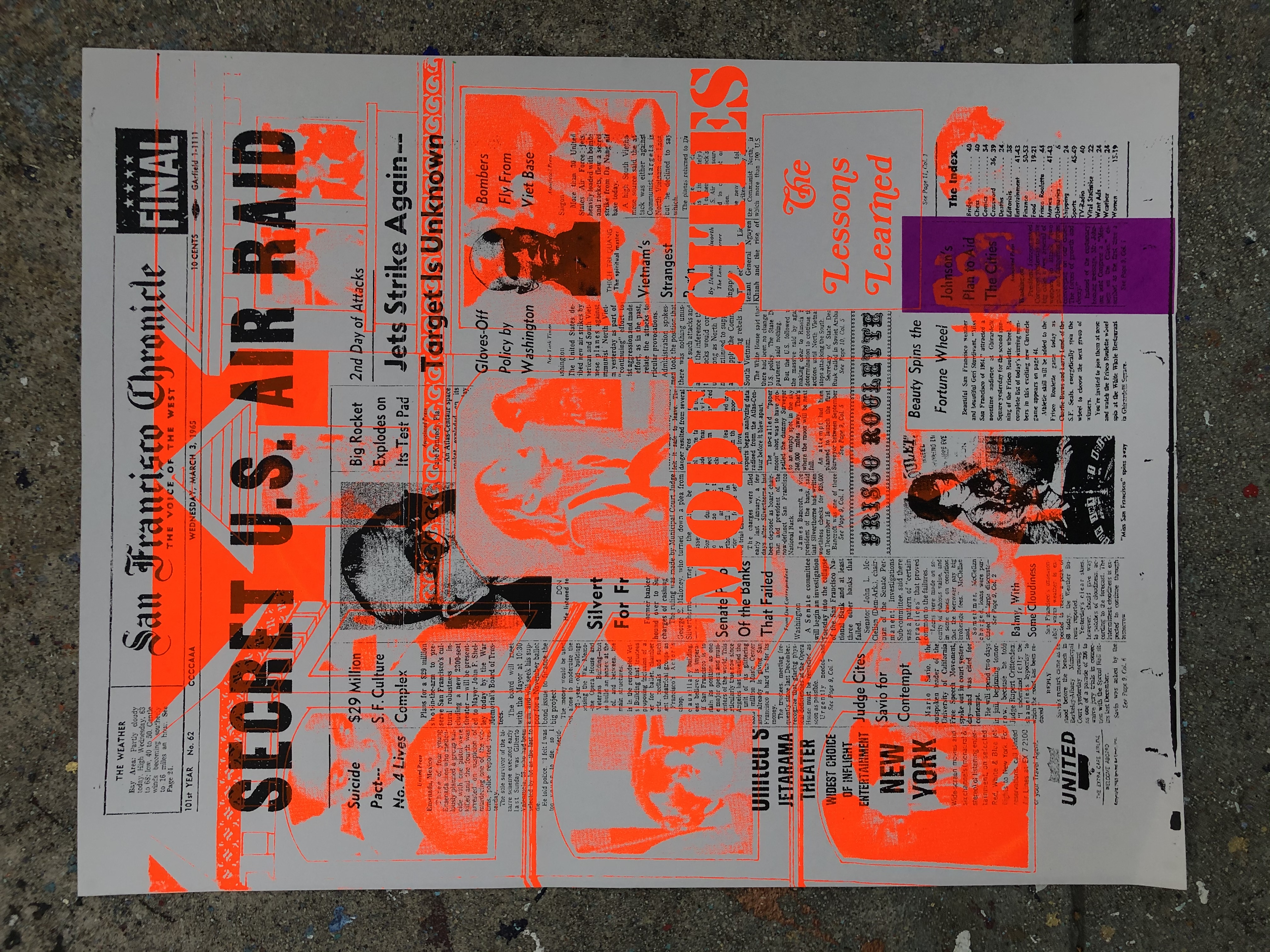




Model Cities/Citizen Control (2019)
Drawing and prints from Model Cities/Citizen Control.
Model Cities/Citizen Control was an installation and happening at Automata Arts in Los Angeles by designer Kimberly Varella and artist/ writer Robby Herbst. Using found text and images the installation represents a history of the Great Societies anti-poverty program known as Model Cities (1969 – 1974). The installation reflects on “citizen control” of anti-poverty programs, a goal of Model Cities in its infancy.
The Model Cities Programs of LBJ's administration was founded to empower and enrich disenfranchised communities nationwide. It aimed to give direct federal dollars to organize low-income community groups to develop their own community led anti-poverty initiatives. This Great Society Program, which operated between the years 1966 and 1974, grew directly out of the social unrest of the early Civil Rights era.
The program was controversial in its day. Criticism from the right held that it created dependency; squashed entrepreneurialism; and radicalize aggrieved communities. Criticism from the left argued that the program underfunded infrastructure changes; didn't address structural racism adequately; and divided communities against one another. Model Cities/Citizen Control presented theses dialogues - and asked viewers to reconsider their welfare imagination.
Additionally, Citizen Participation/A Model Cities Happening, took place at Automata. The idea of “participation” was as important to the Model Cities program as it was to the art of the happening developed during the same era. The event played with notions of history, participation, and the legacy of the liberal Model Cities program for our reactionary era.
See also: Critical Practice, Performance/Happenings